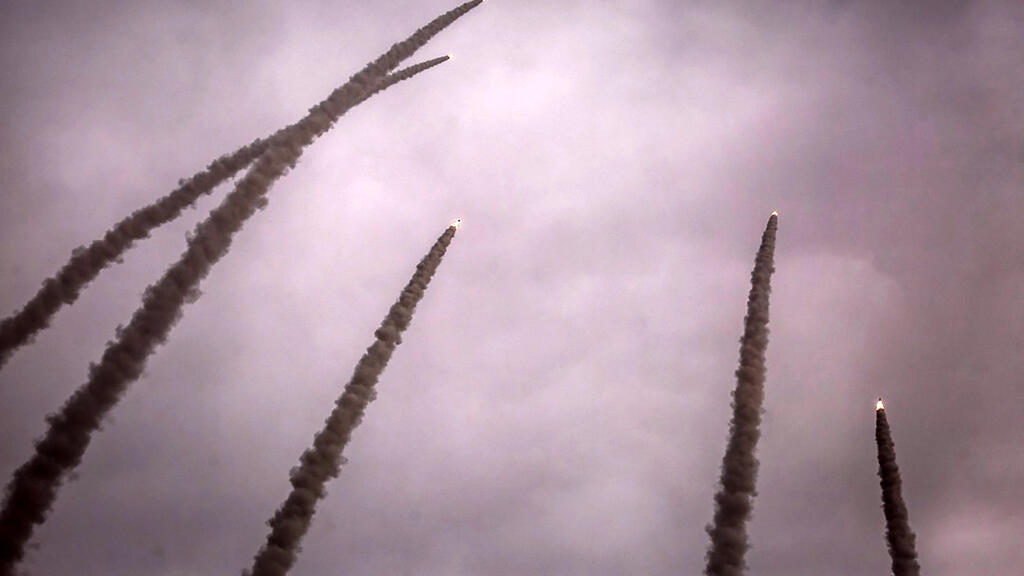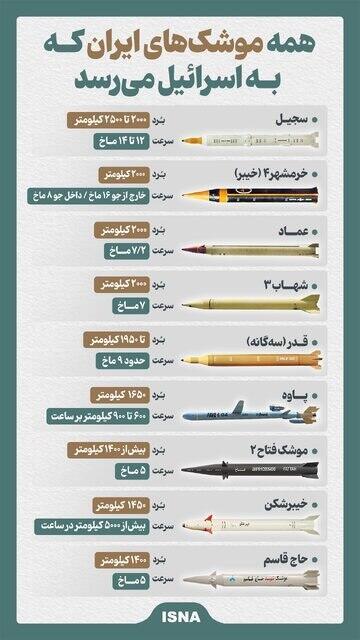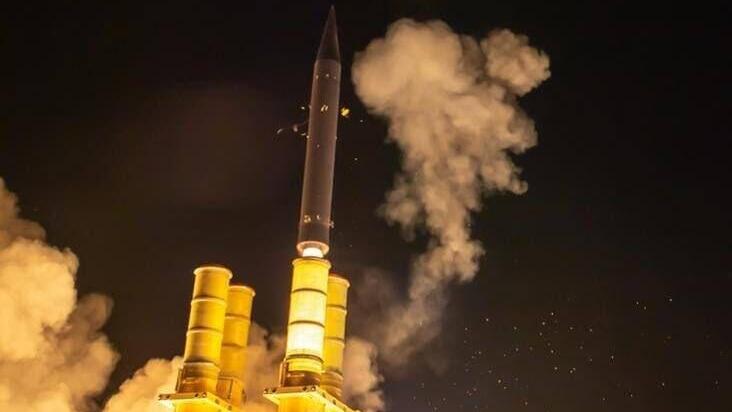There are over 1,000 kilometers (621 miles) distance between Iran and Israel there are at least nine types of missiles in the Iranian military arsenal are capable of traveling that distance. The Sejjil, Khaibar, Emad, Shahab 3, Ghadr, Paveh, Fattah-2, Kheibar Shekan and Haj Qasem all with a range that exceeds the distance between the two countries.
As threats of an Iranian strike amass, and while reports indicate an attack could happen within the next 24 to 48 hours, the British Daily Mail compared the military capabilities of both Iran and Israel.
The paper notes that although Iran's military is larger than Israel's and has a more robust artillery capacity, there will likely not be a direct confrontation between the fighting forces due to the great distance that separates them.
The British publication also doubts whether a naval confrontation would take place and believes the fighting would be conducted with planes, missiles and drones.
The Daily Mail finds the Israeli Air Force superior to Iran's thanks to among other things, the advanced fighter jets supplied by the U.S. including the F-35 stealth jets, and the latest F-15 and F-16 fighters. Israel also has at least 100 more planes than the Iranian, the paper reports.
To respond to Iran's missile capabilities, Israel has a multi layered aerial defense system that includes, the Iron Dome, David's Sling and the Arrow 2 and 3.
The Iron Dome can intercept attack drones, ballistic and cruise missiles and has a range of up to 120 kilometers (75 miles). David's sling with a range of up to 250 kilometers (155 miles) can also intercept drones including those launched at a distance of 2,000 kilometers. It recently successfully shot down a drone over Lebanon.
The Arrow 2 can intercept threats in a range of up to 1,500 kilometers (930 miles) including ballistic missiles. The more advanced Arrow 3 can intercept missiles equipped with a nuclear or chemical warhead in a range of up to 3,000 kilometers (1,864 miles)
Since the start of the war, the Arrow system intercepted three missiles launched by the Houthi rebels in Yemen. The Arrow 3 intercepted a ballistic ground to ground missile also fired by the Houthis. Both systems became operational in the months since the war began.
According to a security official, the aerial defense systems intercept of missiles must be carried out quickly, to greater heights and distances. For context he notes that a bullet fired from an M16 rifle travels at a speed of one kilometer per second while a missile fired in Iran toward Israel would travel 3 kilometer per second. That requires the system used to intercept it to be as fast.
IDF Spokesperson Rear Admiral Daniel Hagari said on Thursday that Israel's missile defenses successfully intercepted thousands of incoming threats. "but there is no such thing as a hermetically sealed defense," he said.




